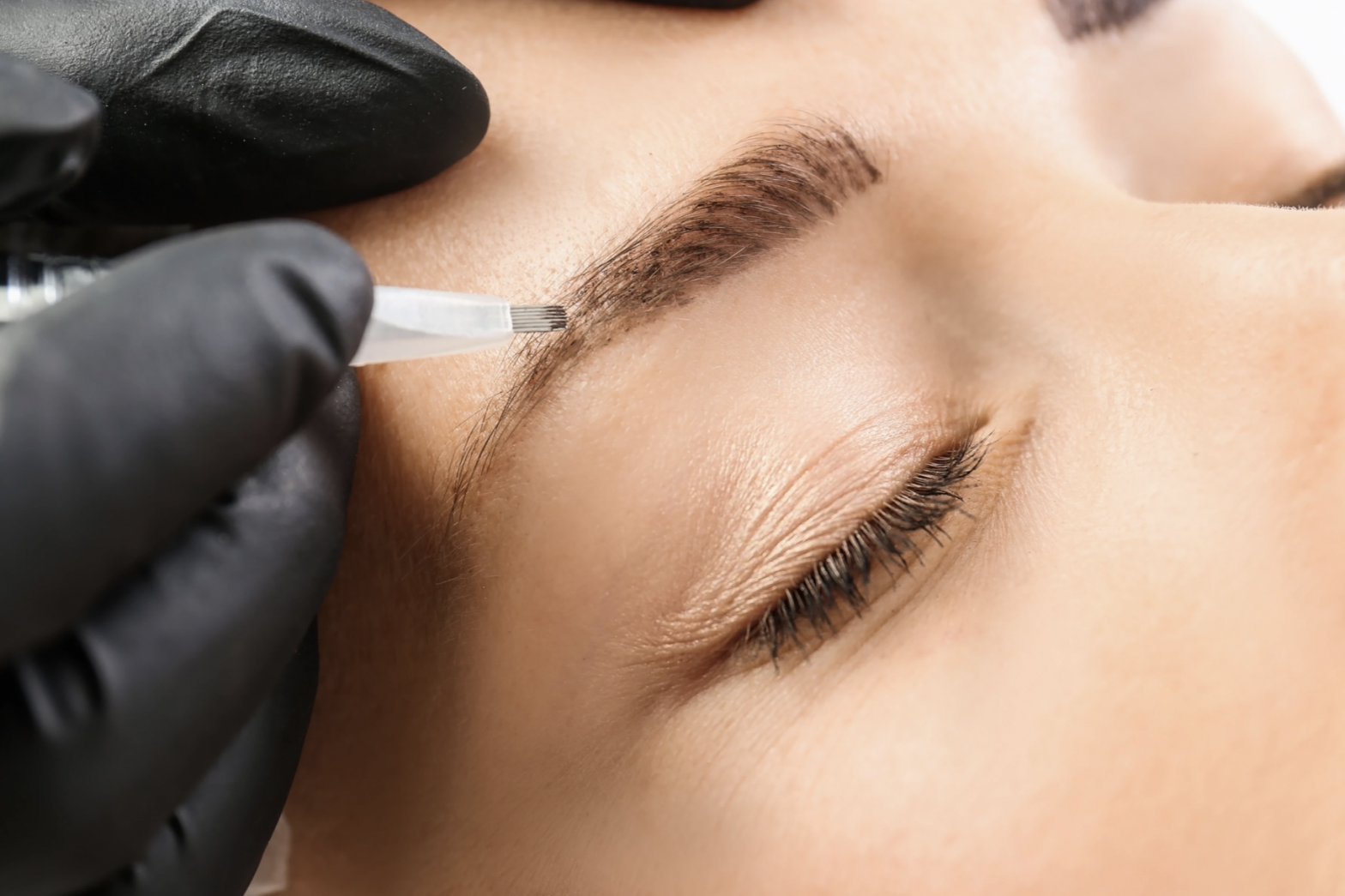The days of over-plucked, super-thin eyebrows are long gone with most opting for a more natural look. But the natural look takes the right product, a steady hand, and a keen eye. Plus don’t forget that every time you remove your makeup, there go your brows.
What if you could offer your clients an alternative to the time-consuming, imperfect process of eyebrow maintenance? Full, uniform, natural-looking eyebrows can be a reality even first thing in the morning with microblading.
What is microblading?
Microblading is a semi-permanent tattoo method that uses a blade made up of tiny, fine point needles to etch and deposit pigment into the skin. The blade makes small, hairlike cuts into the brow area and then pigment is distributed to fill in color.
The microblading tool is smaller than a traditional tattoo gun so you’re able to make the precise cuts that mimic hairs for a natural-looking result.
While the word tattoo might make some nervous, the ink is far less permanent than typical tattoo ink and the process is virtually painless.
What’s the microblading process like?
You’ll start with a consultation to figure out what type of result your client wants. It’s important to make sure you’re on the same page when it comes to fullness, shape, and color.
Once you’ve mapped out the brow style your client wants, you’ll outline the shape you plan to follow so your client can get an idea of how the final result will look.
The process of the actual microblading and pigment distribution takes about an hour. Your client will probably need a follow-up procedure in four to six weeks for touch-ups. The finished product lasts between one to two years.
The importance of after-care
Healing after microblading can take four to six weeks so it’s important to explain the process in detail during the consultation so your client knows what to expect.
The color of the pigment will appear deeper and far less natural for several days after the initial treatment. The eyebrows should not be exposed to water, lotion, soap, or makeup for seven days following the procedure so clients must be very careful when washing their face or showering.
For fourteen days after treatment, clients should avoid sweating heavily, swimming, suntanning, chemical peels, Retin-A products in the brow area, and riding in outdoor vehicles like convertibles or boats.
Between three and fourteen days after the microblading treatment, the eyebrows will develop a scab and begin to heal. It’s important to avoid picking at scabs or touching the eyebrows during this stage. If itching is a problem, a thin layer of ointment can be applied.
After day fourteen, clients can go back to their normal skincare routine. Brow color at this point may appear lighter but will continue to return to the desired shade as time goes on. At the four to six week mark, a follow-up appointment may be needed to touch up color or shape.
Should you bring microblading to your esthetician practice?
Microblading can be a highly profitable treatment for your business. The tools required are not overly expensive and you can charge anywhere from $500 to $1000 for the initial procedure.
Keep in mind that microblading is all about precision as your clients have to live with the results for at least a year. You’ll need to take a course to learn the process and many states have special licensing requirements for permanent makeup artists.
Experts recommend taking an in-person course from an instructor who has been practicing microblading for at least five years, followed by an apprenticeship with an experienced professional.
The Bottom Line
Microblading can be a gamechanger for someone with thinning eyebrows and a profitable treatment option for your practice, but it’s not a quick recovery process. You should always go through a detailed consultation so the expectations are clear, but the results are definitely worth the time spent healing.

